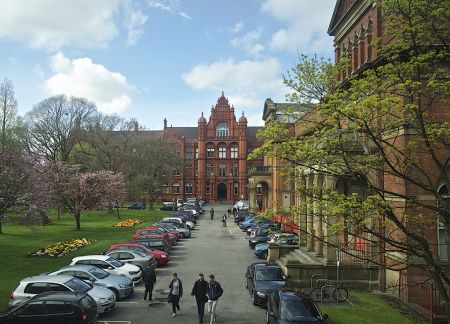
Autonomous Vehicles - How do we get there?
Tuesday 24 July 2018
WITH electric and autonomous vehicles to create 320,000 jobs in the UK, the automotive industry is on the verge a bright and booming future.
But how do we get there in a safe, sustainable manner?
The University of Salford today stages a conference for government and industry to discuss this “transformational journey into the future” as diesel, petrol and passenger-driven vehicles begin to be phased out.
The Connected and Autonomous Vehicles Conference comes hot on the heels of the university taking order of its first autonomous research vehicle and the launch of the UK’s first Bachelor and Master degrees as Salford bids to become a centre of excellence in the field of in AV technology and engineering.
UK Industrial Strategy
Opening the conference at MediaCityUK, Ghasem Nasr, professor of mechanical engineering and innovation, said training the engineers was just one part of the picture with innovation, planning, regulation and investment the other keys to the UK’s rise as a world leader in the field.
“This is a revolution that will create 320,000 jobs in the sector by 2030 and contribute £28 billion to the national economy.”
Co-presenter Mike Brown, director of industrial collaborations at the University, said that electric and autonomous vehicles linked to all four Grand Challenges of the Government’s Industrial Strategy – AI, Clean Growth, Ageing Society and Mobility.
Moreover, he said that the latest evidence showed that 50% of young people want their next/first car to be an electric one.
“Even McLaren – with whom we have a burgeoning relationship –are announcing an electric car – a very quick one," he added.
Vehicle-2-Grid
Professor Will Swan, associate dean of research in the School of Built Environment, presented on the HAVEN project, an Innovate UK project with Honda, Upside and Good Energy to better understand consumer benefits from linking electric cars to the home energy ‘grid’ – so called vehicle-2-grid technology.
Rafael Cuesta, head of innovation for Transport for Greater Manchester outlined the challenges and opportunities of EV and driverless vehicles for the city’s 2.8m residents.
Transport accounts for 1/3 of carbon emissions and an estimated 600,000 extra trips per day across the city will be made by 2030.
“AVs must be shared to ensure quality of life or we will simply replace petrol gridlock with electric gridlock", he said.
Speakers also included: Paul Clarke (Automative Comms), Robert Byrne (Franklin Energy), Stephen Lowe (Enterprise) and Subrahmaniam Krishnan-Harihara, GM Chamber of Commerce.
The CAVEV conference was organised by Salford Professional Development http://www.salford.ac.uk/onecpd/conferences/connected-and-autonomous-vehicles-conference
Find out more
Gareth Hollyman, Senior Press & PR Officer (Science)
0161 295 6895 g.b.hollyman@salford.ac.uk





